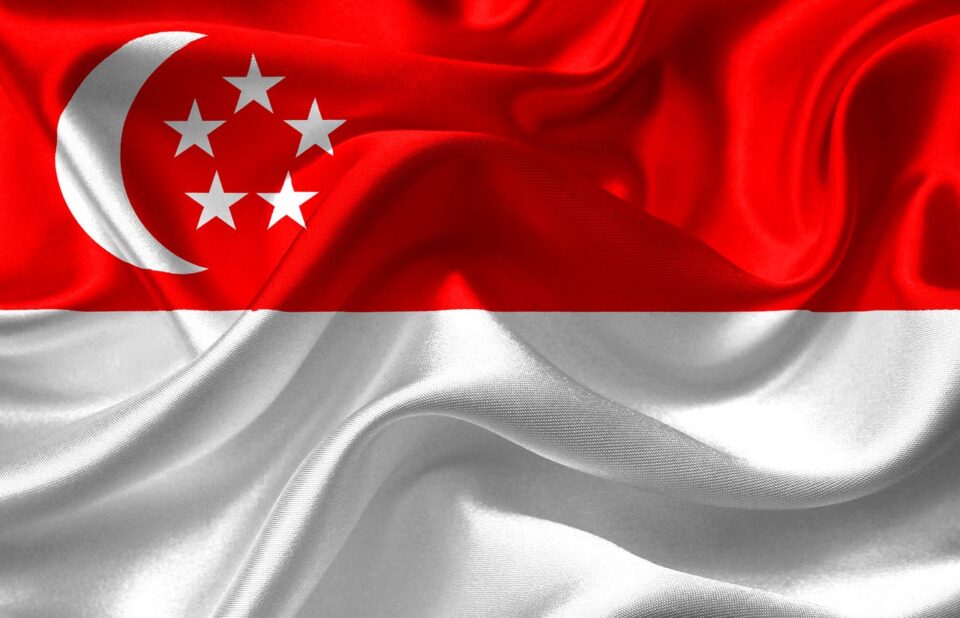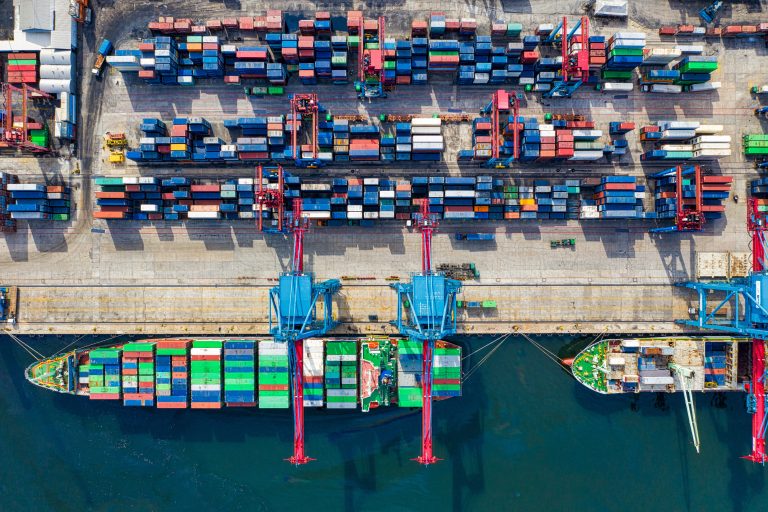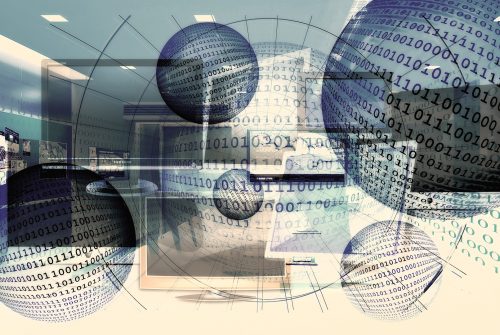
SINGAPORE
GEOGRAPHY
Singapore, city-state located at the southern tip of the Malay Peninsula, about 85 miles (137 kilometres) north of the Equator. It consists of the diamond-shaped Singapore Island and some 60 small islets; the main island occupies all but about 18 square miles of this combined area. The main island is separated from Peninsular Malaysia to the north by Johor Strait, a narrow channel crossed by a road and rail causeway that is more than half a mile long. The southern limits of the state run through Singapore Strait, where outliers of the Riau-Lingga Archipelago—which forms a part of Indonesia—extend to within 10 miles of the main island.
HISTORY
Starting from the name we can say that is combined by two words, Singa (Lion) and Pura (City) and also called City of Lion. The History part we can focus on starts in the 18th Century when the England Empire was used to use and train Singapore as a bearing condition country, to protect, maintain and refuel his boat fleet for the Pacific Ocean operations. It was also a defense line used in case of an expansion from the Dutch Reign. From this political set sir Stamford Raffles started to Transform the country in a commercial point of touch and with the Free-Trade policy Singapore attract Trader from USA, Middle East and Asia. In 1824 become a colony of the England Empire also Center of Government of Malacca and Penang in 1832. After the opening of the Suez Channel and the use of the telegraph Singapore become point of commercial trade of south east Asia. During the WWII Singapore was attacked and conquered by the Japanese Empire Army but in 1945 at the end of the war English Army liberation bring back the country to His Majesty becoming part of England Colonies. In 1959 Singapore achieved his own government, thanks to the People’s Action Party with the leader Lee Kuan Yew as Prime Minister for 31 year from 1959 till 1990. During his government a referendum bring in Malesia Federal Government. Singapore and Malaysian governments disagreed on many points such as political and economical policy till the 1964 and after 1 year on the 9th of August 1965 Malesia approved the expulsion of Singapore from the federation. In the 1967 Singapore become one of the found member of ASEAN as well as Thailand, Indonesia and Philippines, Singapore in 1970 become also a Not Aligned Country deciding not to line up with the World Super Powers. During 1997 – 1998 the country suffered the Asian Crack with an economical crisis that involved the ASEAN countries, caused by a financial speculation started from Thailand, bringing as a chain reaction all the other countries to currency devaluation.
SOCIAL CULTURE AND RELIGION
Demography.
Singapore has a population of about three million, 2.7 million of whom are citizens and permanent residents. The other three hundred thousand are mainly foreign workers. The Chinese constitute about 78 percent, the Malays 14 percent, the Indians 7 percent, and others 1 percent of the population. The ethnic composition of the population has been relatively stable.
Language.
Singapore is a multilingual state. The national language is Malay, and the four official languages are Malay, English, Indian (Tamil), and Chinese (Mandarin). English is the administrative language and the medium of instruction in schools. Pupils also choose one of the “mother tongues”: Malay, Tamil, and Chinese. There are various subdialects of the different languages. There are wide income and wealth differences, but the country is more differentiated by ethnicity than by class. All the ethnic groups have experienced upward occupational mobility. There is an intense focus on education. Good marks are a sure path to good positions with good wages. In this respect, Singapore is a meritocracy. Singaporeans jokingly refer to their desire for the “five C’s”: car, condominium, credit card, club membership, and career. These are important symbols of wealth and status regardless of ethnicity. There is no national costume, but the orchid is used as a national symbol, and textiles with orchid patterns may be employed as a national symbol on formal occasions.
Religion in Singapore is characterised by a wide variety of religious beliefs and practices due to its diverse ethnic mix of peoples originating from various countries. This means that Singapore is commonly termed as a “melting pot” of various religious practices originating from different religious denominations around the world. Most practised religious denominations are present in Singapore, with the Inter-Religious Organisation, Singapore (IRO) recognising 10 major religions in the city state. A 2014 analysis by the Pew Research Center found Singapore to be the world’s most religiously diverse nation. The most followed religion in Singapore is Buddhism, with 33.2% of the resident population declaring themselves as adherents at the most recent census (2015). A large majority of Buddhists in Singapore are Chinese, with 42.29% of the ethnic Chinese population in Singapore declaring themselves as Buddhists at the most recent census (2015). However, there are also sizeable numbers of non-Chinese ethnic groups in Singapore that practice Buddhism, such as the Sinhalese, Burmese and Thais.
POLITICS
Singapore has a strong government and institutional organization that gives him a liable economical stability, thanks to this political situation the country is safe harbor for foreign investments (can be compared to Dubai).
From the independence of the country in 1965 the People’s Action Party (PAP) governed the “City” under the leading guide of the Lee family. PAP has also achieved to maintain his power assuring the country a fast and constant economical growth and control of numerous social life points of interest. During the 2011 political elections PAP on one side confirmed his hegemony with the 60% of the total votes, but on the other side a fall of consents. By the way PAP keep almost the total majority of the parliament. The election day in 2015 (11th of September) saw a positive share for PAP receiving the 70% of the universal suffrage in Singapore. Analyzing the political success of PAP in 2015 is notable the emotional situation due to the death of the Founder-Father of Singapore Lee Kuan Yew, the economical success of the City, the opening attitude to other countries and society and the increment of the social expenses toward the middle-low society. The new government become operative on the 1st October 2015 guided by the leader and Prime Minister Lee Hsien Loong with the confirm of old political personality and the pore economy, still in good health, is now facing a slowdown if the growth with 1,9% confirmed by the Government forecast. A data which is far from the 2,2% of 2015, 2,9% in 2014 and the “roaring” 6,2% of 2011. Due to the slowdown of China with the one Singapore has the strongest economical relationship worth 80 billion Euros a year, the first foreign investor of the country. Beijing is one of the historic point of reference for Singapore’s business.
The slowdown is due to the competitively of near by counties with lower costs of raw materials and manpower, especially in the manufacture segment with represent the 20% of the total GDP. In Singapore is rising the construction and hotel-restaurant sector moving respectively to +2,6% and +1,6% instead of +1,2% and 0,8% of the 2015. Singapore price index was affected by the relative stagnation of economic activity and the collapse of raw materials: ate the end of 2015 the inflation rate even reordered a decline of -0,6% a trend that continues in 2016. After those datas Singapore Monetary Authority (MAS) took the decision, in mid April 2016, to stop the appreciation of the dollar and keep its value stable against the basket of reference currencies. Singapore government decided, in 2016, to approve an investment plan for relevant resources such as programs for unemployed, old people and poor social classes assistance. Government is now moving on few structural reforms heading Singapore’s Economy towards much higher added value sectors. The goal is to push enterprises investments on technology innovation and internalization due to saturation of the local business market. To this end, incentives and tax breaks have been provided for small and medium sized enterprises and the creation of districts that serve as a magnet for technological development. To coordinate and plan these efforts in the medium and long term, a technical committee was finally set up “for the future of the economy”, chaired by the Minister of Finance, with the task of identifying suitable instruments to relaunch the development of the City-State and maintain its status as a “diamond point” for research and technological innovation with high added value.


INVESTMENT OPPORTUNITIES
Information and communication services
Singapore’s Government is now heading towards a strong economic plan that gives to the City-State a competitive advantage kept among the years on the other South-East Asian countries. Doing so Singapore is the first choice for the one who want to invest in the region. The goal is to organize an advanced technological economy, capable of creating value through highly specialized services, while manufacturing is concentrated on cutting edge sectors such as pharmaceuticals and technologies applied to medicine, information technologies, the aerospace sector, renewable energies, maritime engineering and precision. In this context, foreign investments are welcome if they bring knowledge, technology, if they stimulate the growth of innovative start-ups. We are witnessing continuous growth in investments in applied scientific research and in supporting the innovative start-up sector. Very large public funds will be allocated, in the coming years, to investments in the digital economy, in particular in its declination in support of the so-called “smart city”. The theme of information technologies is particularly felt in Singapore, where the limitations in terms of territory and natural resources require a constant modernization of the city to promote sustainable growth. They are now investing a lot in the so-called “internet of things”, in the development of sophisticated systems of communicating sensors of the urban infrastructure to monitor the environmental situation, traffic conditions, lighting systems, energy saving, waste management, water consumption.
Transport and storage
For the next decades the Government of Singapore is planning a series of interventions aimed at doubling the metropolitan line, building airport terminals, moving and further expanding the port, which is already among the first in the world for ship flow and cargo movement. An agreement has recently been signed with Malaysia for the construction of a high-speed railway line that will connect Singapore and Kuala Lumpur, which should be operational by 2026. Regarding storage, an interesting opportunity for operators is the existence in Singapore, particularly at the port and Changi airport, of some sites where there is an exemption from import duties (so-called Free Trade Zones) . In these areas it is therefore possible to store one’s own goods for re-export in the area and / or for sale to third parties, without the payment of customs tariffs or the GST (the local VAT correspondent). These fees will obviously be due once the goods are released from the Free Trade Zones for entry into the City-State territory, but not if they are directly sent to third countries. Electricity, gas, steam and air conditioning (also from renewable sources) In the field of renewable energy and environmental services, Singapore is also at the forefront in the treatment of clean energy, wastewater treatment, with a strong emphasis on research and development. With regard to environmental issues, Singapore is a model of sustainability in the energy and chemical sector and supports companies in the sector that innovate in the field of energy efficiency and carbon emission reductions.
Construction
Singapore continues to invest in luxury real estate. For Italian companies Interesting spaces can be found for the export of high quality materials such as tiles, marble, taps, bathrooms, kitchens and furniture.
Food-stuffs
The food industry in Singapore is very flourishing. Being a very high income country, there is wide demand (but also offer) of high-end products.
Once the FTA has entered into force between the European Union and the City – State, the removal of numerous non-tariff barriers will facilitate the importation of some typical Italian products, particularly appreciated in the world. As regards sausages in particular, the simplified authorization procedure recently granted by Singapore is already a significant development for Italian companies in the sector that are entering this market. However, it must be considered that large-scale distribution imposes substantial costs for the marketing of food products and that it is a “mature” market, so that in some sectors, such as wine, the substantial offer already present may leave little room for new products that are not particularly competitive or of very high quality level.

INTERNATIONAL RELATIONS
The government of Singapore keep on investing in the international Free-Trade, both on the bilateral and multilateral aspect, this because the prosperity of the Country is based on the trade and the attraction of foreign investments. Singapore is one of the ASEAN founding member and one of the bigger supporter of the association, it is also keep on building the path to the integration and the confirm of the regional impact of Singapore in the area and with other foreign countries.
Singapore is also promoter and front-country of the Asia Middle-East Dialogue: a forum of debate between countries of the two continents, regarding relationship and cooperations based on ht international rights. As mentioned in the first piece of work Singapore is one of the focus city in Asia for those who wants to expand their own business, exporting new products or more easier use the City-State as a free of duty storage. Since late 90’s Singapore is the protagonist of a fast and positive economic growth, touching a +15% in 2010 also used by foreign companies as Asian headquarter is a convenient “space” for business. We are now going deeper to analyze the 5 W in order to see what Singapore has to offer and with who is in relationship. The main goal is to see what kind of business Singapore is having with the European Union and his State members. For further details it is much better to apply a deeper research fro export, the following informations are here to understand which way can be walked for a successful partnership with Singapore.
Agreements
In this chapter we are going to analyze countries which have a relationship with Singapore, regarding our path, highlighting European Union and more in detail Italy and The Netherlands. Remember the following agreements will be effectively on 21st of November 2019.
European Union
The EU is a historical partner of Singapore, building a stronger trade and business relationship since the 19th Century. Today this relationship came to another step and coordinated by agreements between EU and the City-State, giving a free trade possibility and also facilities of getting into Asian market. On the 19th October 2018 both Singapore and EU signed three innovative agreements in the following sectors: Political Relationship, Commercial and Investments. More in details the agreements regard the Protection of Investments, Framework fo Partnership and Cooperation. Together they underline a step forward to a more present European Union in the ASEAN area as a growing and potential market.
The Protection of Investments is an update of twelve old bilateral agreements, now unified, introducing a modern common framework for investment protection with a balanced jurisdictional system for the resolution of investment disputes. The partnership and cooperation agreement consolidates the existing relations between the European Union and Singapore and is based on a common commitment to multilateralism and a rule-based international order. The agreement will also allow to strengthen scientific and technological cooperation in areas such as energy, the environment, the fight against climate change, the protection of natural resources, smart cities and transport. Bringing on the able some numbers the EU exports to Singapore worth 33 billion dollars of goods and 22 bn regarding services, more or less the same for the importations from the City-State. But not only money! The agreements also recognize EU certifications’ and safety tests, in this way exports are helped by common rules.
Italy
Italy is involved in the new agreements as well, indeed is the 34th greatest trader country of Singapore. This mean also less costs to face for import and export. Businesses of all sizes in towns and cities across Italy already export a wide range of goods and services to Singapore. Going deeper we will see what Italy sell, import and in which way. Numbers and Facts, the easiest way to understand them is an infographic where numbers are shown as relevant informations and used to understand immediately the situation.
In the 70’s and 80’s with creation of Made in Italy brand Italy fortified her position in the global exportation, still one of the most recognizable certification, counting almost 16 billion Dollars market worth. In more practical words the niche products of Made in Italy can easily find a market space in every country, what we face is the limited production, limiting the exportation but at the same time fulfilling the requests. Food and wine such as Battipaglia Mozzarella or Barolo Red Wine are examples of what Italy is famous for (one part). Keep in mind that Singapore has strict rules and fees regarding Food and Beverages importation, a registration to AVA (Agri-Food and Veterinary Authority) is needed before the exportation. Italy at the moment is allowed to export and sell only Pork Meet (or processed goods from) and eggs, wine as well.
The other part of Made in Italy is fashion, tailor made suits or shoes are symbols of luxury and taste globally. In Singapore (one of the wealthiest country) the exportation of Made in Italy goods is a fertile market. What also Italy exports are products of larger industries, Electrolux for example is one electrical and house facilities brand largely recognized, indeed in 2018 the total revenue from this exportation worth 124 million Dollars. It is not the highest revenue sector, let’s see together which are the most significant exportations to Singapore. The first (always in 2018) is regarding: computer items, clocks and medical-electrical systems and tools, worthing 456 million Dollars. The second is about Machinery and Tools in general with 345 million Dollars, followed by Chemical Products with 225 million Dollars (if we think about Novartis chemical Industry).
The Netherlands
The Netherlands and Singapore already have a close trading relationship. The EU Singapore trade agreement will give it a big boost.
As well as Italy, The Netherlands, will receive benefits from the recent agreement but also due to a strong relationship between the two. Putting numbers in order The NL is the 9th greater trade partner of Singapore, moving around 10 billion $ of imports and exports. Indeed the 2018 exportation value from NL to Singapore is 5.7 billion $ and it includes lots of varieties of product. Here below a map with the major exporter cities and their local products (local mean typical products of Holland not all exports). With a surplus value of 1.3 billion $.
Meanwhile the importations from Singapore worth 4.4 billion dollars and it includes many products imported from the City-State storage, used as interchange. Here below a scheme of the Netherlands exports to Singapore in the las year. The value on the right is expressed in Euros. As well as Italy the second scheme is representing the exportation categories in percentage.
